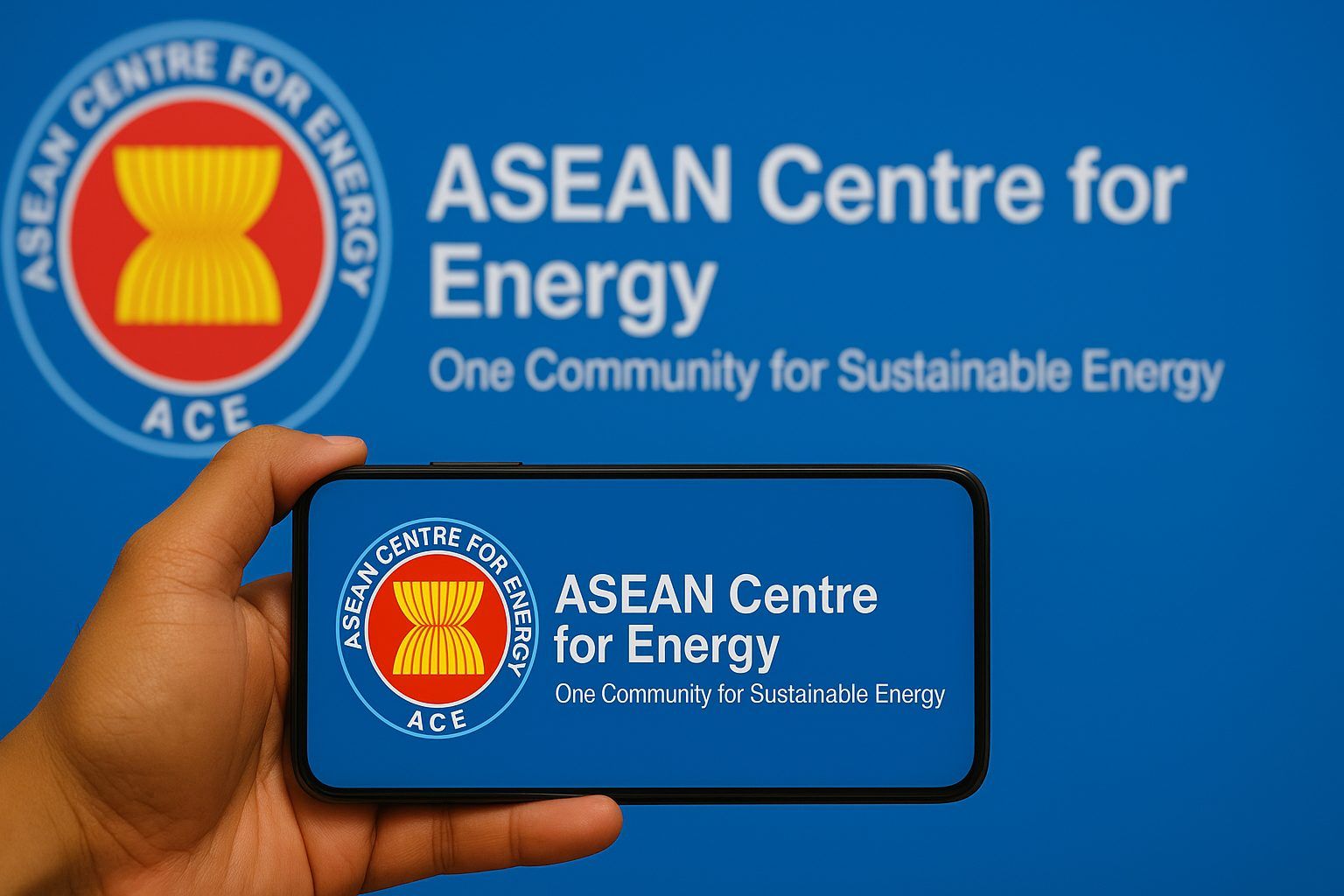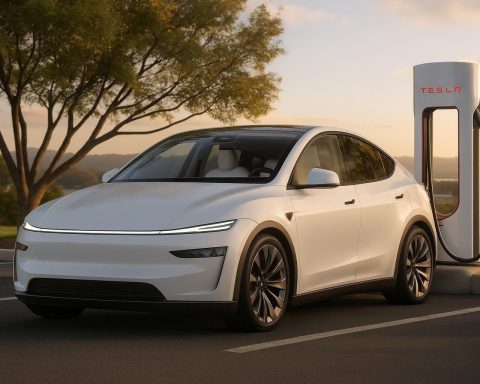As of 27 November 2025, Asia’s energy transition is no longer an abstract roadmap but a live construction site.
Within days, a Fortune commentary argued that a unified ASEAN power grid is essential to unlock Southeast Asia’s renewable potential, even if it is expensive. [1] MSCI’s latest analysis, highlighted by AsianInvestor, set out which Asia‑Pacific (APAC) companies are best placed to win—or lose—in this uneven transition. [2] And a brand feature on ABS‑CBN, “Asia’s clean energy shift gains corporate momentum rise,” underscored how deeply clean energy has entered corporate strategy and marketing across the region. [3]
Today, those narratives are being grounded in hard infrastructure and capital. A US$6 billion solar‑plus‑storage corridor in Johor, Malaysia, new grid‑finance pledges made at COP30, and growing cross‑border power deals are turning Southeast Asia’s green potential into physical cables, substations and long‑term power contracts. [4]
ASEAN Power Grid moves from PowerPoint to power flows
The ASEAN Power Grid (APG) has been on the drawing board since 1996, with the ambition of eventually linking the electricity networks of all 10 member states to enable multilateral power trading. A recent regional forum in Singapore reiterated that the APG’s vision is to deliver reliable, affordable and increasingly renewable power to around 680 million people by 2045. [5]
In October, ASEAN energy ministers endorsed the 2026–2030 ASEAN Plan of Action for Energy Cooperation (APAEC), setting a target to lift renewable electricity to 45% of installed capacity and to raise renewables to 30% of total primary energy supply by 2030, while cutting energy intensity 40% below 2005 levels. [6] Those goals simply cannot be met without stronger transmission and regional balancing—exactly what the APG is supposed to provide.
Momentum has accelerated on three fronts:
- Policy and governance. An “Enhanced MoU” for the APG, recently endorsed by ASEAN ministers, focuses on harmonising rules for cross‑border trading—things like grid codes, wheeling charges and dispute resolution—which investors have long said are prerequisites for large‑scale capital deployment. [7]
- Financing. A new Asian Development Bank–World Bank Financing Initiative for the APG signals that multilateral lenders are ready to help mobilise the estimated US$100 billion required for regional transmission infrastructure by 2045. [8] At COP30 in Belém, development banks pledged more than US$12 billion for stronger electricity interconnections in Southeast Asia, backed by philanthropic capital from the Global Grids Catalyst. [9]
- Early cross‑border projects. The Lao PDR–Thailand–Malaysia–Singapore (LTMS) power trade, which channels Lao hydropower to Singapore via Thailand and Malaysia, is being renewed after a short delay linked to Thai political changes. Malaysia’s energy transition minister called the APG the “backbone of ASEAN,” while also flagging rapid demand growth from data centres and heavy industry at home. [10]
Taken together, these developments echo Fortune’s core argument: yes, a regional grid is costly and complex—but it is the only realistic way to move green power from resource‑rich locations to booming demand centres in an integrated, scalable way. [11]
Johor’s US$6 billion green energy corridor: a flagship for cross‑border renewables
The Southern Johor Renewable Energy Corridor (SJREC), announced today with backing from the World Bank Group’s International Finance Corporation (IFC), may become the defining project of this new grid era. [12]
Key features:
- Scale. The corridor is planned as a multi‑gigawatt solar‑plus‑storage hub, with an initial phase targeting around 4 GW of solar PV and 5.12 GWh of battery storage, according to technical reporting from PV Tech. [13]
- Capital stack. The roughly US$6 billion investment brings together IFC, Johor’s state investment arm Permodalan Darul Ta’zim (PDT) and Malaysian developer Ditrolic Energy, signalling strong confidence from both public and private capital. [14]
- Regional role. SJREC sits within the Johor–Singapore Special Economic Zone (JS‑SEZ) and Johor’s Green Development Policy 2030. It is designed not just to power local industry but also to export clean electricity to Singapore and, eventually, into the wider ASEAN grid. [15]
- Corporate demand. IFC has highlighted hyperscale data centres, manufacturers and other corporates as core off‑takers for the project’s output, aligning neatly with the surge in digital infrastructure across the region. [16]
This is not happening in a vacuum. APAC is in the middle of an US$800 billion data‑centre construction boom, with Moody’s projecting that regional capacity could double by 2030 and account for about 40% of global data‑centre capacity. Yet almost half of APAC’s energy supply still comes from coal, and data‑centre electricity consumption alone is expected to roughly double between 2024 and 2030. [17]
Projects like SJREC are attempts to square that circle: pairing large‑scale renewables and storage with cross‑border transmission, so that cloud computing, AI and advanced manufacturing can grow without locking Asia into decades of new fossil‑fuel build‑out.
Asia still leans on fossil fuels—but the grid is becoming the lever
Despite the headlines, Southeast Asia remains heavily fossil‑fuelled today. A recent analysis drawing on ASEAN Energy Outlook data found that roughly 70% of the region’s electricity generation and over 80% of total primary energy supply still depend on coal, oil and gas. Renewables account for the remaining 30% of electricity, led by hydropower and bioenergy. [18]
A separate Reuters deep‑dive last week warned that long‑term coal power purchase agreements (PPAs) across Asia—often with 9 to 18 years left—are locking utilities into burning coal even when wind and solar would be cheaper, for fear of breaching contracts. [19]
That is why grid expansion and regional power trading matter so much:
- Cross‑border interconnections allow surplus hydropower, solar and wind to be exported instead of curtailed.
- Multi‑country markets can absorb variable renewables more easily, reducing the need for backup coal.
- Larger balancing areas make it easier to offer 24/7 carbon‑free power products that big tech firms and manufacturers increasingly want. [20]
Far from being a niche idea, the APG is rapidly becoming the primary policy lever for aligning ASEAN’s growth, energy security and climate goals—exactly the point made in the Fortune commentary now rippling through policymaking circles. [21]
Technology readiness: MSCI’s roadmap to APAC’s transition winners
While infrastructure sets the stage, technology readiness is increasingly determining which companies actually benefit from the transition. That’s the central message of new MSCI research spotlighted by AsianInvestor this week. [22]
Using its Energy Transition Framework, MSCI looks at three main dimensions:
- Policy pressure – how strongly national climate policies, carbon pricing and subsidy reforms push companies to decarbonise.
- Technology pressure – whether viable low‑carbon technologies exist for a sector, and how fast they are scaling.
- Transition readiness – how prepared companies are in terms of governance, strategy, capex and risk management.
Some standout findings:
- APAC accounts for more than half of global energy‑related CO₂ emissions, yet it is also home to many of the world’s fastest‑growing climate‑solution companies, especially in solar, batteries and electric vehicles. [23]
- Developed markets such as South Korea, Japan, Australia and New Zealand face the strongest policy-pressure scores thanks to carbon pricing and tighter fossil‑fuel subsidy regimes, while India and emerging ASEAN markets still experience comparatively weaker policy pressure—for now. [24]
- Power generation and auto manufacturing are already undergoing rapid technological change. Companies in these sectors that delay the shift risk both stranded assets and competitive erosion, especially as Chinese renewable and EV players continue to scale. [25]
- In contrast, heavy industries like steel, cement and petrochemicals face much tougher and more expensive decarbonisation pathways, relying on emerging technologies such as hydrogen‑based steelmaking or carbon‑capture‑equipped plants. Their transition will likely be slower and more capital‑intensive. [26]
Crucially for investors, MSCI finds that APAC companies involved in mature transition solutions—solar, wind, storage, grid flexibility and clean transport—are structurally better positioned for growth, assuming they can manage policy and market risks. [27]
That dovetails neatly with what the Johor corridor and broader APG push are doing on the ground: creating the physical system that those technology‑ready firms can plug into.
Corporate Asia’s clean‑energy appetite is reshaping power markets
Corporate behaviour is catching up fast with these market signals.
An Eco‑Business feature earlier this month, sponsored by Schneider Electric, concludes that clean energy has become financially viable for many businesses in Asia Pacific—not just a CSR nice‑to‑have. Solar PV costs have fallen so sharply that in countries such as India and Vietnam, corporate users can already save 15–50% versus conventional grid tariffs when they switch to renewables, according to Schneider’s regional advisory team. [28]
Other key trends from that piece and related coverage: [29]
- Corporate PPAs (CPPAs) are becoming mainstream in “cost‑competitive markets” like India, Vietnam and parts of Australia, where renewables are cheaper than fossil‑fuel power.
- Strategic markets such as Singapore and Japan, where land constraints make renewables pricier, are still seeing corporates pay a premium for clean power to hedge against energy‑security risks and fuel‑price volatility.
- Emerging markets like Thailand, Indonesia and Malaysia are busy drafting CPPA‑enabling rules, with policymakers looking to copy Vietnam’s recent PPA boom—often explicitly linking reforms to the ASEAN Power Grid vision.
- Across the region, more than 70% of organisations in a recent Malaysian survey are now investing over 10% of their capex in low‑carbon initiatives, reflecting how deeply decarbonisation is being baked into business plans. [30]
The ABS‑CBN brand feature on “Asia’s clean energy shift” may be sponsored content, but its very existence—and the tags it carries, from renewable energy and green energy to coal and fossil fuel—shows how centre‑stage this topic has become in mainstream business discourse, especially in Southeast Asia’s fast‑growing economies. [31]
Global capital is following. Today, Brookfield Asset Management confirmed it is entering Thailand and the Philippines by acquiring Singapore‑based independent power producer Alba Renewables, gaining an immediate utility‑scale renewables platform in two of ASEAN’s most dynamic markets. [32] And in India, KKR‑backed Serentica Renewables is targeting up to US$8 billion to expand its green‑energy portfolio to 17 GW by 2029/30, signalling continued appetite for large‑scale transition investments in the wider region. [33]
Grids, data centres and capital: three pieces that must align
Put all of this together—the APG push, the Johor corridor, MSCI’s technology‑readiness lens and the surge in corporate clean‑energy demand—and a clearer picture emerges of what it will take for Asia’s transition to succeed.
- Infrastructure needs to stay ahead of demand.
Data‑centre and AI power needs in APAC are growing so quickly that, without massive grid upgrades and cross‑border links, they risk crowding out decarbonisation efforts. The APG, along with national projects like the Borneo Power Grid, is the scaffolding that can prevent that outcome. [34] - Policy must converge with technology and finance.
MSCI’s work shows that policy pressure, technology readiness and corporate governance are what ultimately drive emissions and capital flows—not high‑level pledges alone. Markets that align these three factors could see a virtuous cycle of investment and innovation; those that don’t may struggle with stranded assets and rising borrowing costs. [35] - Corporate action is now a system‑level force.
When Fortune 500‑type companies sign multi‑decade CPPAs, demand 24/7 clean‑energy products and build factories or data centres where grids are greenest, they indirectly influence where new transmission lines, storage hubs and power plants are built. Schneider’s advisory work and Eco‑Business reporting make clear that this demand is no longer marginal. [36] - Fossil‑fuel lock‑ins and “false solutions” remain real risks.
Long coal PPAs and heavy reliance on carbon capture plans—Asia’s current CCS pipeline could add 25 billion tonnes of extra CO₂ by 2050, according to one recent report—could still derail the Paris 1.5°C goal if they crowd out renewable deployment and grid investment. [37]
What to watch after 27 November 2025
The stories behind today’s headlines suggest a few signposts to watch over the coming months:
- Next APG milestones. Will the LTMS project’s next phase be sealed on schedule, and can ASEAN turn its Enhanced APG MoU into concrete, bankable interconnection deals? [38]
- Implementation of APAEC 2026–2030. National energy plans and regulations will reveal whether the region truly intends to hit its 45% renewable‑capacity and 30% primary‑energy targets—or treat them as aspirational. [39]
- Follow‑on deals around SJREC. If more corporates and data‑centre operators sign up as anchor customers, the Johor corridor could become a template for other cross‑border renewable hubs in the Mekong, Borneo and beyond. [40]
- Investor use of technology‑readiness scores. As more asset owners integrate frameworks like MSCI’s into mandates and benchmarks, transition‑ready companies could see a lower cost of capital while laggards pay more. [41]
In short, the lines between policy, grids and balance sheets are blurring. The Fortune op‑ed on the ASEAN power grid, MSCI’s technology‑readiness research, and corporate‑focused pieces from ABS‑CBN and Eco‑Business are all describing different parts of the same system in motion. [42]
After today’s announcements, it’s clearer than ever that Asia’s clean‑energy transition will be decided not just in climate negotiations—but in the substations, corridors and corporate boardrooms that are finally starting to connect.
References
1. fortune.com, 2. www.asianinvestor.net, 3. www.abs-cbn.com, 4. www.pv-tech.org, 5. govinsider.asia, 6. www.reuters.com, 7. govinsider.asia, 8. caseforsea.org, 9. www.reuters.com, 10. www.reuters.com, 11. fortune.com, 12. www.pv-tech.org, 13. www.pv-tech.org, 14. www.pv-tech.org, 15. www.pv-tech.org, 16. www.pv-tech.org, 17. www.datacenterknowledge.com, 18. fulcrum.sg, 19. www.reuters.com, 20. govinsider.asia, 21. fortune.com, 22. www.asianinvestor.net, 23. www.msci.com, 24. www.msci.com, 25. www.msci.com, 26. www.msci.com, 27. www.msci.com, 28. www.eco-business.com, 29. www.eco-business.com, 30. www.eco-business.com, 31. www.abs-cbn.com, 32. www.pv-tech.org, 33. esgnews.com, 34. www.datacenterknowledge.com, 35. www.msci.com, 36. www.eco-business.com, 37. www.reuters.com, 38. www.reuters.com, 39. www.reuters.com, 40. www.pv-tech.org, 41. www.msci.com, 42. fortune.com










